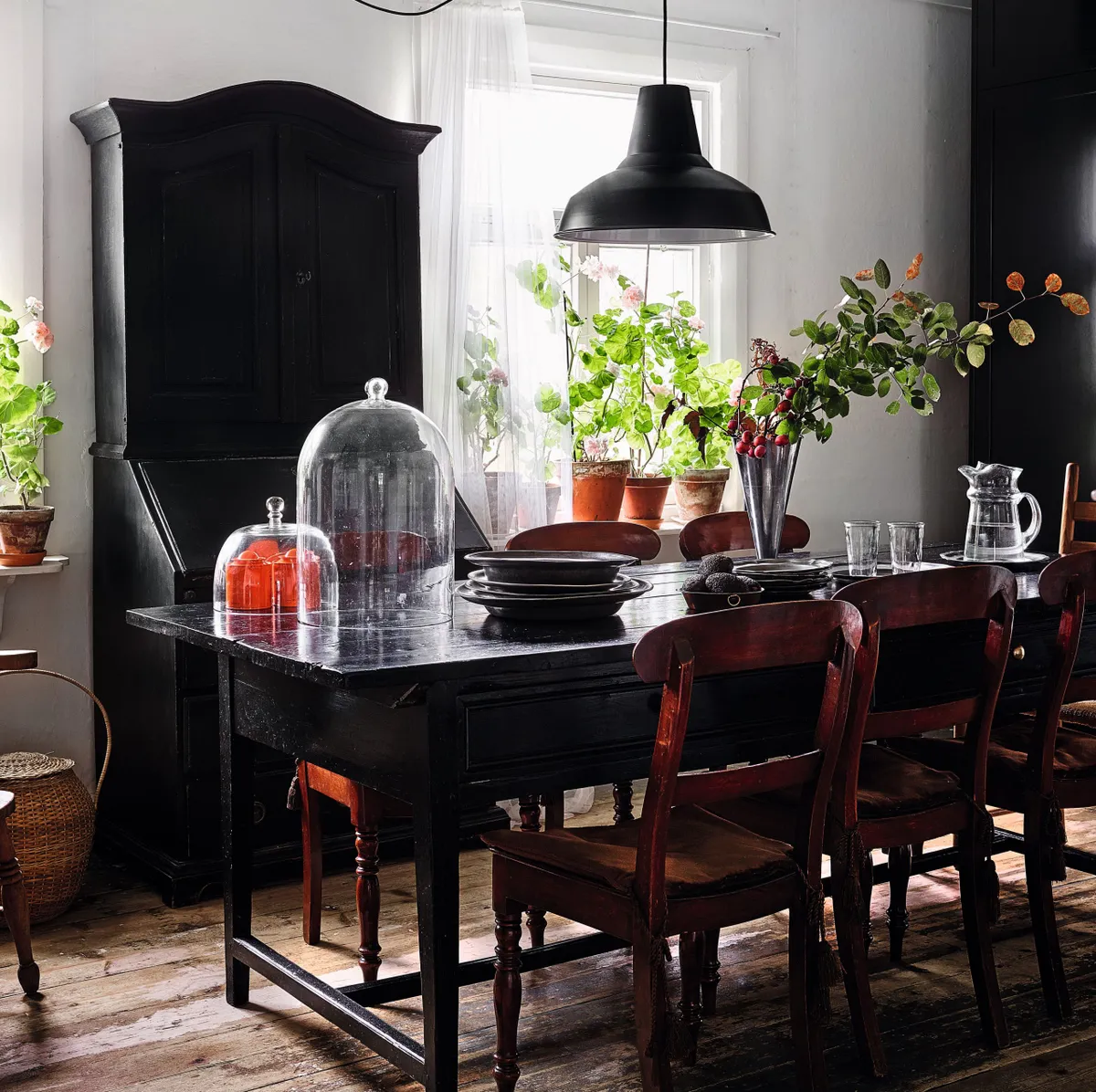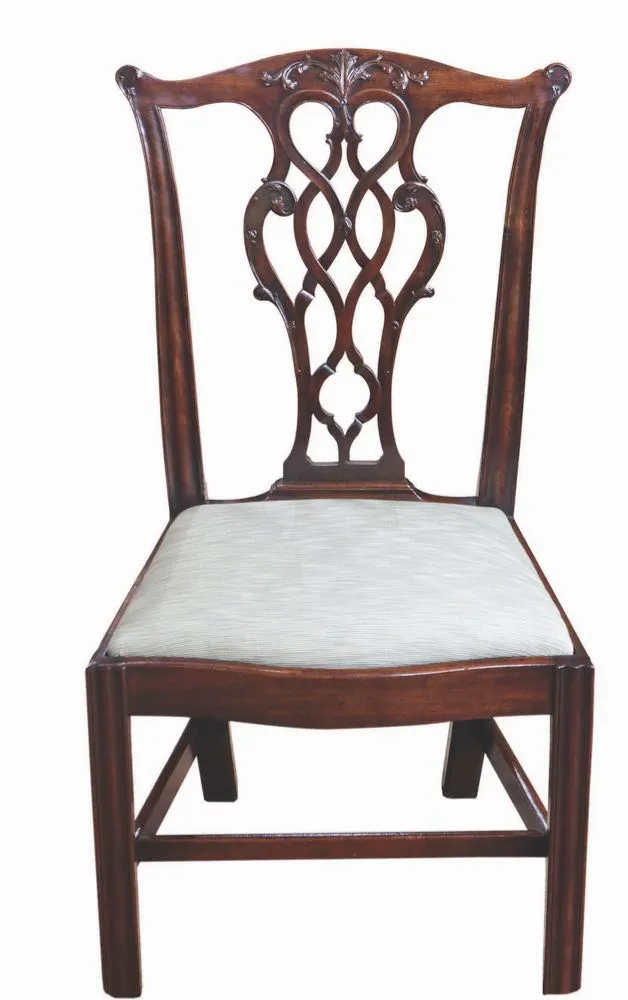
These days, the mention of dining chairs probably conjures images of convivial evenings around a dining table with friends, but it wasn’t always so. Chairs began life as symbols of authority. Generally made from oak or walnut, and with designs linked to church architecture, the earliest examples were intended only for the most distinguished diners – everyone else perched on benches or stools. Even when sets became the norm, from the 17th century on, individual status was upheld by chair design: the carvers that form part of most sets of chairs echo the tradition to this day.
‘Over the centuries, as well-to-do households grew in number, so too did the demand for chairs,’ says Cristian Beadman from Duke’s Auctions. Leading 18th-century furniture makers, such as Chippendale and Hepplewhite, offered elegant designs that chimed with fashionable chinoiserie, gothic and classical taste. Some of these had upholstered or caned seats and were made from exotic imported hardwoods such as mahogany. Others were painted or japanned, or carved from local wood. Meanwhile, below stairs in the servants’ hall and in less affluent homes, simple chairs made from pine, or yew and elm provided the seating.

‘Reproductions of many styles were made long after a design first appeared,’ warns Cristian, although certain styles are synonymous with a particular period, such as the flamboyant, balloon-backed chair designs, which were popular for smaller Victorian dining rooms.
Technology also played its part in the story of the dining seat. From the mid 19th century, innovative methods of manufacture using steam and glue, as perfected by Michael Thonet, meant sinuously shaped bentwood chairs could be produced in large numbers. Simple lines and new materials, such as vinyl, metal and Perspex, were the cornerstones of mid 20th-century modern chairs, typified by Hans Wegner’s famous Wishbone chair, and Eero Saarinen’s Tulip.
After centuries of chair making, complete sets are widely available at auction and from antiques shops. Age, quality, condition and number in the set are the keys to value. ‘As a rule, 18th-century chairs are most valuable, but since the same design was often made over a long period, it can be difficult to date them,’ says Cristian. ‘Look for substantial proportions and heavy wood. Later versions tend to be less generous and lighter in weight.’
The decline of the dining room has reduced the value of the chairs, but the number in the set is important. ‘From a group of six, the value goes up per chair to an optimum of 16 and then flatlines,’ Cristian says. Meanwhile, demand for chairs by 20th-century designers is strong. Condition is also a factor to consider. If the joints weaken, the back or legs will move and creak, and the chair will need restoring before it can be used safely. Nevertheless, a set of antique chairs represents good value for money, especially compared to modern equivalents.
‘You can buy a late Georgian set of eight Chippendale-style chairs from as little as £1,000,’ Cristian says. ‘Quite apart from the cost, it’s more environmentally responsible than buying modern reproductions.’
PRICE GUIDE FOR DINING CHAIR SETS
Antiques shops and auctions sell chairs for all budgets
- A set of eight George III Chippendale-style mahogany dining chairs will typically cost between £1,000 and £3,000.
- Expect to pay between £300 and £700 for a set of eight country-style ladder back chairs with rush seats from the late 18th or early 19th century.
- Eight 19th-century Georgian-style mahogany dining chairs will cost from £500 to £1,000.
- 20th-century Georgian-style dining chairs can be bought for as little as £100, rising to £500.
- Six mid 20th-century G Plan teak dining chairs range from £200 to £400.
- Expect to pay £200 to £400 for six vintage Ercol stick back beech dining chairs.
